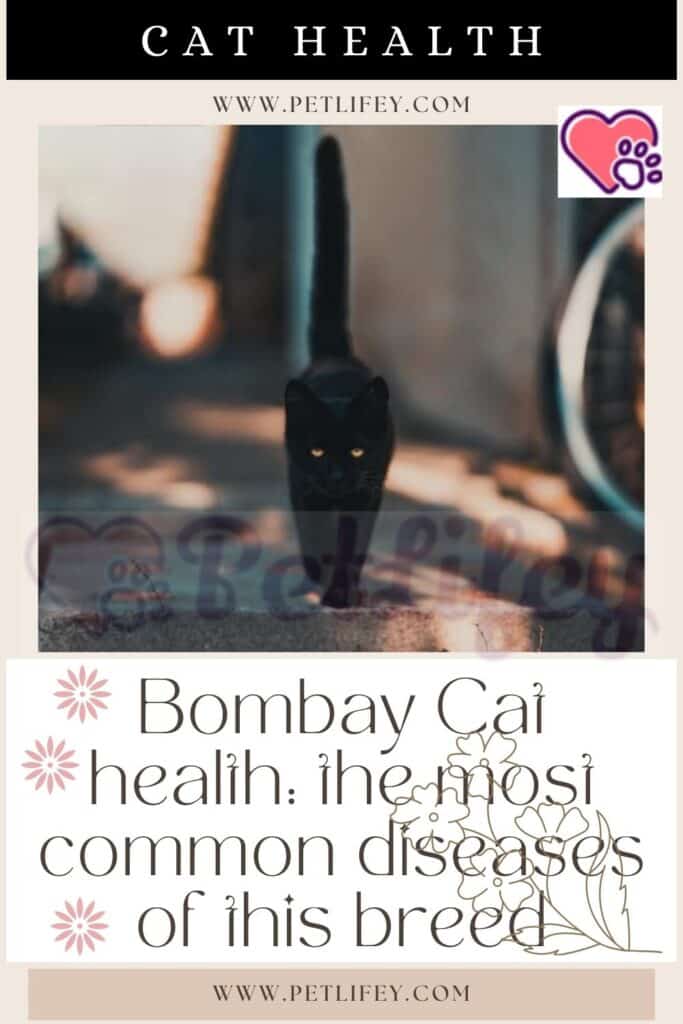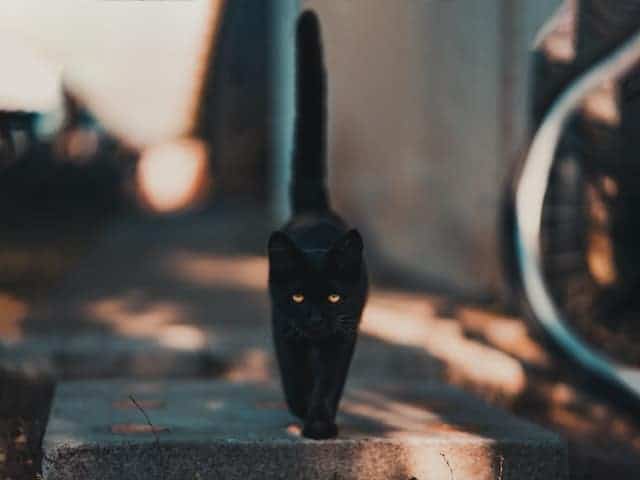
Bombay cat diseases, the most common health problems in this cat breed. Let’s find out what they can be.
It is important, if not useful, to find out about the health problems of the cat breed you want to welcome at home. This is because each species can be prone to certain pathologies.
In today’s article we will find out what are the diseases of the Bombay cat and everything that can occur regarding the health of this breed.
Diseases of the Bombay cat: the most common

The Bombay cat has a life expectancy that varies between 12 and 15 years on average, always if it is kept in greeting and well cared for.
Unfortunately, despite being massive and with strong muscles, the Bombay cat can be subject to specific diseases, such as:
- Bombay craniofacial anomalies or BHD syndrome: caused by incorrect development of the head structures. Therefore, if the cat has this pathology, it will not have a nose, will have degeneration of the eyes or serious brain problems. The chance of survival is greatly reduced. To be able to diagnose it, it is possible to carry out a genetic screening;
- Carcinoma: It is a type of cancer of the mucous membranes of the mouth represented by growths, ulcers and mounds of squamous tissue. It generally affects older cats, starting from 9 years of age. When the carcinoma is malignant and extensive with metastases, radiotherapy is used as it is not always possible to intervene surgically. Since it is quite painful and causes loss of appetite, if the presence of a carcinoma in the cat is suspected, the animal must be transported to the veterinarian to ascertain and intervene, where possible promptly;
- Gingivitis: It is the inflammation of the cat’s gums caused by tartar. The pathology can be treated by carrying out a correct dental wash but also by administering antibiotics to fight the bacteria that cause gingivitis. It is possible to understand that the cat suffers from gingivitis due to the redness of the gums, bleeding and pain and lack of appetite;
- Hypertrophic myocardiopathy : It is a pathology that causes a thickening of the heart muscle. It causes heart failure that generates arrhythmias, or pulmonary edema. The diagnosis is made thanks to an echocardiographic examination, to be renewed generally at least once a year. Based on the medical report, the vet can administer drug therapy that can improve the cat’s health. In this case it is important to be able to carry out a control screening with echocardiography on the cat once a year;
- Periodontitis: It is the infection of the dental tissues and affects the gums and bone. It is caused by the buildup of dental plaque and subsequent neglected tartar and this can lead to tooth loss. This disease is easily confused with other similar diseases such as gingivitis or cat mouth lesions. To rule out other pathologies, the vet will carry out diagnostic tests (radiographs and blood tests) to confirm the presence of periodontitis and, in this case, will prescribe antimicrobial drugs to attack the bacteria responsible for the pathology. He will then perform, cleaning and extraction of unusable teeth and prescribe the correct therapy for the animal. Given the complexity of the situation it is always better to take the cat to the vet, if you observe problems with the cat’s mouth and symptoms such as bad breath, bleeding and retraction of the gums, loss of teeth and mouth ulcers;
- Feline stomatitis : It is an inflammation of the mucous membrane of the mouth due to a chronic bacterial infection. This pathology is very painful for the cat to cause loss of appetite with consequent weight loss. Milder cases are resolved through surgical removal of the affected tissues. Stomatitis in cats is manifested by: redness, abscesses, excessive salivation and dry mouth.
Other diseases
In addition to the diseases described above, there are other pathologies that can affect all cats, including the Bombay, such as:
- Abscesses : These are infections due to deep wounds;
- Cat eye diseases : Such as conjunctivitis which occurs when the cat’s eye is inflamed and closed.
- Skin diseases: Stress dermatitis and parasites, but also those caused by allergies and the use of products not suitable for the skin. This is followed by feline acne and eczema, as well as mite mange and ringworm caused by a skin fungus.
- Cat ear diseases : Otitis or inflammation of the epithelium that covers the ear canal of the auricle. It occurs mainly in people with low immune defenses;
- Severe diseases: Such as FIV , FeLV, toxoplasmosis and heart disease.
- Cold : The common cold is a respiratory disease that can be mild and transient.






